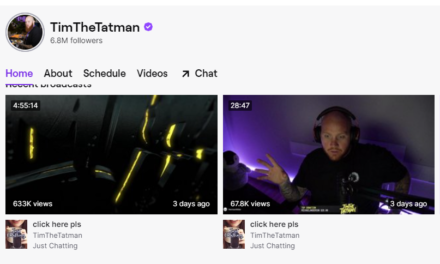When someone searches for your content topic, you want to be the source they find (and visit.)
But how do you get that premium position? The go-to research spot for millions is Google Search. That’s why you should optimize content on your site. Though generative AI tools may eventually weaken Google’s influence, don’t expect that to happen any time soon.
Your brand will benefit if your content ranks on the first screen, appears in the AI overview at the top of the results, or is visible in any other Google feature.
That’s why I read with interest Neil Patel’s analysis of 138 domains ranking well on Google over the last two years. Neil is a bestselling author and owner of the NP Digital digital agency. He’s been in the website improvement industry for almost two decades, having founded Crazy Egg and Kissmetrics.
Based on what Neil found in the analysis, we’ve put together some advice on how to optimize content:
1. Update your go-to content twice a year
Content on these ranking sites was updated an average of 1.35 times a year per page. Now, you don’t need to change every page on your site. Update those key pages that often get forgotten once you publish them.
Tweak the content on your about-us and resource pages. Update your pillar pages (the in-depth content pages about your topic). Don’t forget to check your analytics and revisit the most popular pages, too.
2. Stick with the EEAT formula
Google really does favor content that follows its Experience, Expertise, Authoritativeness, and Trustworthiness principles. (Neil says it’s even more important to help Google’s AI today.)
Simply put, create well-written content that answers your targeted users’ potential questions with credible sources. Don’t forget to showcase your (and other creators’) experience through author bios and profiles on the page.
Helpful Resource: What Expert Creators Need To Know About Google’s EEAT
3. Go outside
Three-fourths of the ranking web pages had backlinks to external sites, and they’re gaining more backlinks every year. That means your site can benefit from having your content shared (i.e., linked) by third-party sites. But don’t just look for any site that will link to your content (I get a lot of requests for The Tilt to link to content that is totally irrelevant to this community.)
Find sites where your target audience already lives, and identify how you can add value to those sites. Perhaps you could be an expert source for their podcast (with a mention and link in the on-page description), or maybe you could write a guest article that includes a link to a relevant content page on your site.
Helpful Resource: Guest Blogging Can Help You Grow Your Audience
4. Look inside
Almost all the web pages in the analysis included at least three internal links. What pages’ content connects to other pages’ content on your site? For example, in this article about SEO, I’ve linked to a few other topical articles published on this site.
But what about the other pages? On your about-us page, for example, you can discuss your content tilt and link to the three most popular content pages on your site. Get creative, but make sure whatever internal links are added make sense for that page.
5. Get social
The well-ranking sites used an average of five social media accounts to promote their site. In order of popularity, they included LinkedIn, Facebook, Instagram, YouTube, and X.
That’s how you should use social channels — as a marketing tool to promote your brand and its content, which will drive visitors to your owned channel, aka your website.
Helpful Resource: How To Move Your Audience From Rented Land
6. Don’t forget meta
Many creators, however, stick with the meta description they originally wrote and published for a page. However, the analysis finds that each site made 114 changes to its meta tags on existing pages. Why? They’ve learned what really prompts readers to click the link from the search page and optimize the content.
Look at your Google Analytics to see what pages search visitors go to on your site. Find and tweak the meta descriptions and tags for similarly relevant content pages on your site.
Helpful Resource: How To Narrow the Metrics That Matter for Your Business
Get helpful advice to grow your content business every Tuesday and Friday. Subscribe to The Tilt newsletter. It’s free!
About the author
Ann regularly combines words and strategy for B2B, B2C, and nonprofits, continuing to live up to her high school nickname, Editor Ann. An IABC Communicator of the Year and founder of G Force Communication, Ann coaches and trains professionals in all things content. Connect with her on LinkedIn and Twitter.










